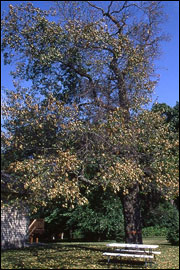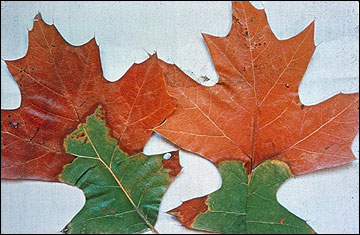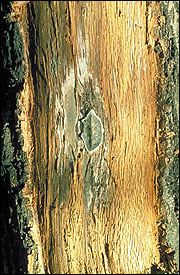Oak wilt
Oak wilt is a lethal disease of oaks, especially species in the red oak group. A fungus invades the tree, which causes it to die. In Missouri, the oak wilt fungus is spread primarily when sap-feeding beetles carry oak wilt spores to fresh wounds during the early part of the growing season. Once established in a tree, oak wilt can move though root grafts connecting nearby oaks.

The first symptom of oak wilt in red oaks is usually browning and wilting of leaves in the upper crown in early summer. (Photo by Joseph O’Brien, USDA Forest Service, bugwood.org.)

Wilted leaves display olive drab or light tan to bronze tissue starting at the margins and progressing toward the leaf base. (Photo by C.E. Seliskar, unknown affiliation, bugwood.org.)

Rapid defoliation of red oaks can occur within two to six weeks of initial infection, and death occurs within a year. White oaks might take years to die from the infection. Under ideal conditions, oak wilt fungal mats form under the bark of dead red oaks the spring following the tree's death. This causes cracks in the bark and emits a sweet, fermenting odor, which attracts sap-feeding insects that spread the fungus. (Photo by John N. Gibbs, Forestry Commission, bugwood.org.)